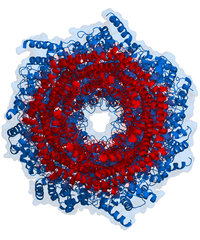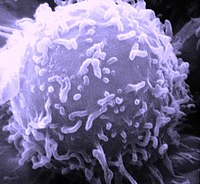
Control efficacy of the systemic acquired resistance (SAR) inducer acibenzolar-S-methyl against Venturia nashicola in Japanese pear orchards
Sign Up to like & getrecommendations! Published in 2021 at "Journal of General Plant Pathology"
DOI: 10.1007/s10327-021-01013-w
Abstract: Scab caused by Venturia nashicola is one of the most serious diseases of Asian pears, and conventional fungicides used to control scab can lose their efficacy when fungicide-resistant strains develop. In contrast, the efficacy of… read more here.
Keywords: venturia nashicola; efficacy; resistance sar; efficacy systemic ... See more keywords

Efficacy of UV-C radiation in inducing systemic acquired resistance against storage carrot rot caused by Sclerotinia sclerotiorum
Sign Up to like & getrecommendations! Published in 2017 at "Postharvest Biology and Technology"
DOI: 10.1016/j.postharvbio.2017.04.009
Abstract: Abstract This research was carried out to assess inhibitory effect of UV-C (0.88 kJ m −2 ) against four isolates of Sclerotinia sclerotiorum , causal agent of carrot rot, in vitro and in vivo . A bank… read more here.
Keywords: sclerotinia sclerotiorum; systemic acquired; carrot; carrot rot ... See more keywords

Systemic acquired resistance, NPR1, and pathogenesis-related genes in wheat and barley
Sign Up to like & getrecommendations! Published in 2018 at "Journal of Integrative Agriculture"
DOI: 10.1016/s2095-3119(17)61852-5
Abstract: Abstract In Arabidopsis, systemic acquired resistance (SAR) is established beyond the initial infection by a pathogen or is directly induced by treatment with salicylic acid (SA) or its functional analogs, 2,6-dichloroisonicotinic acid (INA) and benzothiadiazole… read more here.
Keywords: pathogenesis related; bth; systemic acquired; acquired resistance ... See more keywords

Inducible biosynthesis and immune function of the systemic acquired resistance inducer N-hydroxypipecolic acid in monocotyledonous and dicotyledonous plants
Sign Up to like & getrecommendations! Published in 2020 at "Journal of Experimental Botany"
DOI: 10.1093/jxb/eraa317
Abstract: N-hydroxypipecolic acid, which systemically accumulates in phloem sap of Pseudomonas syringae-inoculated cucumber, is synthesized and functions as an activator of systemic acquired resistance in diverse monocotyledonous and dicotyledonous plant species. read more here.
Keywords: monocotyledonous dicotyledonous; hydroxypipecolic acid; systemic acquired; acquired resistance ... See more keywords

Multi-Omics Revealed Molecular Mechanisms Underlying Guard Cell Systemic Acquired Resistance
Sign Up to like & getrecommendations! Published in 2020 at "International Journal of Molecular Sciences"
DOI: 10.3390/ijms22010191
Abstract: Systemic Acquired Resistance (SAR) improves immunity of plant systemic tissue after local exposure to a pathogen. Guard cells that form stomatal pores on leaf surfaces recognize bacterial pathogens via pattern recognition receptors, such as Flagellin… read more here.
Keywords: multi omics; systemic acquired; acquired resistance; molecular mechanisms ... See more keywords

Role of Poly(ADP-Ribose) Polymerase (PARP) Enzyme in the Systemic Acquired Acclimation Induced by Light Stress in Phaseolus vulgaris L. Plants
Sign Up to like & getrecommendations! Published in 2022 at "Plants"
DOI: 10.3390/plants11141870
Abstract: Plants are able to acclimate to environmental constraints through functional modifications that may also occur in tissues that are not directly exposed to stress. This process is termed “systemic acquired acclimation.” The present study aims… read more here.
Keywords: stress; parp; systemic acquired; light stress ... See more keywords

A New Benzothiadiazole Derivative with Systemic Acquired Resistance Activity in the Protection of Zucchini (Cucurbita pepo convar. giromontiina) against Viral and Fungal Pathogens
Sign Up to like & getrecommendations! Published in 2022 at "Plants"
DOI: 10.3390/plants12010043
Abstract: The ability of plant resistance inducers to provide protection against viral diseases is one of their main advantages over conventional pesticides. In the case of viral diseases that cannot be controlled directly with pesticides, insecticides… read more here.
Keywords: acquired resistance; protection; systemic acquired; activity ... See more keywords

Role of NPR1 in Systemic Acquired Stomatal Immunity
Sign Up to like & getrecommendations! Published in 2023 at "Plants"
DOI: 10.3390/plants12112137
Abstract: Stomatal immunity is the primary gate of the plant pathogen defense system. Non-expressor of Pathogenesis Related 1 (NPR1) is the salicylic acid (SA) receptor, which is critical for stomatal defense. SA induces stomatal closure, but… read more here.
Keywords: systemic acquired; role npr1; stomatal immunity; npr1 mutant ... See more keywords